Excited by a worm
This week: Excited by a worm; Planting lunch; Pass the sunscreen; Like pushing rats up a drainpipe; Springwatch 2021; Looking back;
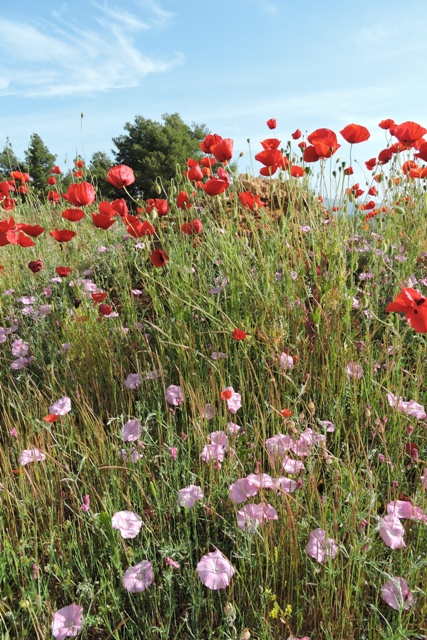
Over the last couple of day this week, we have had temperatures of over 20ºC. These are close to the average for this time of year.
I have downloaded the data from my weather station up to the end of the month and added it to my spreadsheet.
Looking at the graphs, they show that the temperatures, both maximum and minimum, have been lower than the average, throughout the spring.

This mirrors the weather experienced across all of Europe and much of the northern hemisphere.
It does explain why in the early part of the month I have had the electric blanket on before going to bed.
It also explains why I’ve woken on several mornings to find one or more felines are on the bed too.
April has been drier than normal as well. Usually we have between eight and ten rainy days during the month.
In 2021 I have only recorded three wet days in April. Even then, the amount of precipitation recorded in millimetres has not reached double figures.
As for the rest of the year? Who knows….
Excited by a worm
I spent almost a year after finding my new home here in Dol, going through the legal machinations of buying property in Croatia.
As well as the legal side of the purchase, I also spent time doing on-line research. I researched as much as I could from Abu Dhabi, into other aspects of life in this part of the world.
My research included things like summer and winter day length, land usage and growing conditions for crops beyond olives and grapes.
I also looked for a range of other things, for example, old photographs of bygone times.
One thing that I didn’t do during my visits was to take any soil samples. Although even if I had, the results would have been unlikely to have made me change my mind about the purchase.
It was only after having moved in that I realised that the soils of two of my land parcels were highly alkaline and completely worked out.
The top orchard and fold yard, where the animals had been kept were the only plots with good soil.
A couple of years ago I took a Dundee University course in soil science. All the student were asked to dig out 25 cm cubes of soil from different areas of our land and to examine it.
This told me how bad the soils in the Drupe and Citrus orchard were. These are heavy clay loam, full of stones, waterlogged in winter and baked hard in summer.

The soil samples were completely lacking any vegetable matter and devoid of essential nutrients.
However one result I had not expected was that there was not a single worm in any of the test cubes.
Doubtless there were other microbes, nematodes and creepy crawlies too small to see with the naked eye. But of megadriles there were none.
Later I installed a soil temperature thermometer probe, at the standard instrument depth of 10 cm below the soil surface. In summer it recorded temperatures exceeding 35ºC, so I understood why there were no worms.
Ever since I have been experimenting in these two orchards with different methods to both try and reduce the number and variety of weeds, and to increase the amount of organic material in the soil.
Planting lunch
My 1,000 square metre Top Orchard is a different matter. This was where the goats and chickens lived and occasionally a pig as well. It is sheltered in the early part of the day from the fierce Mediterranean sun by two large Plum trees.
The combination of leaf matter and animals has resulted in a good quality soil. Last weekend you would have found me forking over the soil and creating a bed for Asian Salad leaves,
Whilst digging, I was absolutely delighted to find a large number of earth worms. Most of them were quite large and they were spread throughout the area where I was digging.
I found other visible soil life too, some wire worms and centipedes. It is a good sign of a healthy soil.
I have had a variety of seeds growing in pots in my propagator, but this last week I have also been given a tray of excess plants by a local grower.
These are things like Mizuna, Brassica juncea v. Japonica, Wasabi Rocket, Diplotaxis erucoides, Tatsoi, Brassica navinosa, and Mibuna mustard, Brassica rapa.
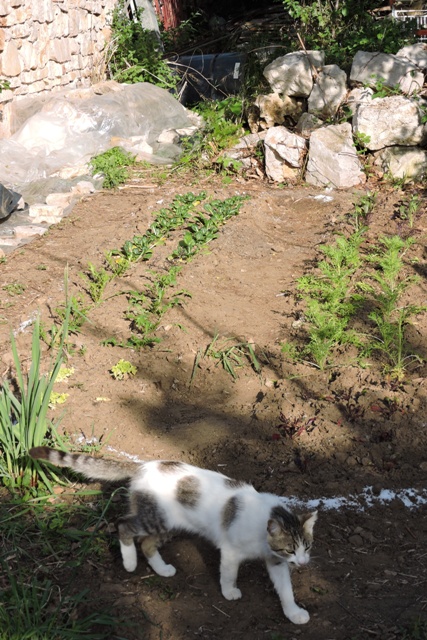
I have also planted some lettuce just for good measure.
What I do have plenty of, in all the orchards are snails. There are different kinds, but the ones which cause me the greatest concern are the Garden Snail, Cornu aspersum.
These snails grow into large specimens which I am am told, in times past were collected and eaten, as they are in France today.
They grow large because of their diet of the youngest and most tasty shoots, especially of plants in the salad garden.
I have added a circle of rock salt around the salad leaves bed, to keep the gastropods at bay. One of my neighbours has surrounded his plants with a bed of ash from his wood stove as his deterrent.
I’ll be interested to see which method works best.
Pass the sunscreen
I have had a couple of nice walks through the olive groves with the felines this week.
I walk and they run round like kids let out to play, up trees, down trees, playing tig and generally having fun.
My senior cat Callie is having her 10th Birthday today, so she is around 56 in human terms. And before you ask, yes, we all had a special birthday lunch. Some nice boneless fish, poached slowly and served warm.
Mine was flavoured with herbs and a fresh lemon from the orchard. The felines fish was served plain.
Callie has always been the adventurous one. Here at just 12 days old, being returned to her mum after doing some exploring around my villa.

Her sister Jesse now lives in Cheshire and her Mum went to Australia, so definitely a well travelled family.

Two of the kittens who are mainly white, have little fur on the tips of their ears. I noticed that both have got sunburnt. And that is without having had the usual amount of direct sunshine so far this year.
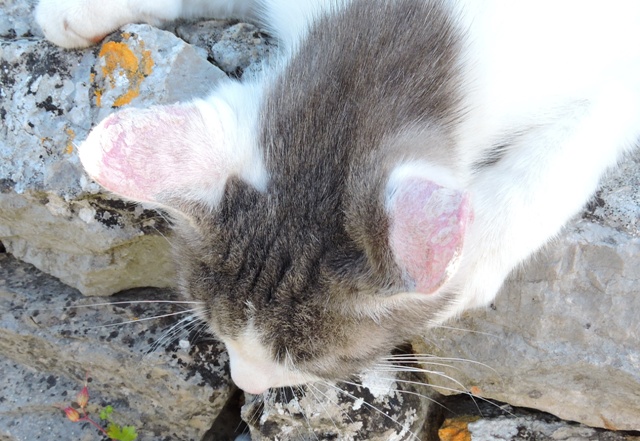
I was aware that white cats are especially susceptible to skin cancer because of their lack of melatonin, but these are the first white cats that I have had.
Callie, although almost completely white when she was born, has gradually gained dark patches over time, including her ears.
The little ones don’t seem to be bothered by their damaged ears, although I know that cats skin is different to ours. They don’t feel skin pain like we do, for example when having vaccinations.
Although it looks quite painful, Argen doesn’t seem to be too bothered.

I had a look on line and saw there was the usual helpful advice, from getting them to wear sun hats (I kid you not!) or keeping them inside.
Another suggestion was to rub on sunscreen, and not forgetting the pink tips of their noses while you have the cream out.
I can see that this will be rather like trying to give a tablet to a cat. This is best carried out when their minds are fully occupied by food….
I will be taking Pongo to the Vets next week for his “little operation” and I’ll ask Dr. Fabian what he recommends. Maybe I’ll have a look in DM and see what they have available too.
Like pushing rats up a drainpipe
I have made more progress this week on the project to revamp the Konoba.
Once the concrete was nicely dry, the builders returned with rolls of Barutekt V30 waterproof membrane.
This is a bitumen based material that is heated and melted into place to bond with the concrete underneath and onto the overlapping areas of the material.
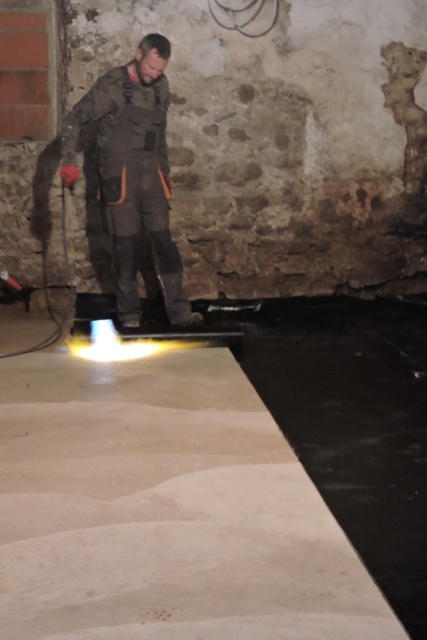
The material is also bent up the walls to above the height of the next layer of concrete. This creates a waterproof tank on which the floor tiles will be laid.
A propane gas cylinder is used together with a flame wand to heat the concrete as the material is rolled into place. It bonds almost instantly and is an effective way of adding a damp proof membrane.
After this work was finished, I had the tradesman who sandblasts stone call and give me a quotation for cleaning and pointing the walls.
However this will only happen after the final concrete layer is in place and dry.
Before the next layer of concrete goes down, I have to run the underground services – the central heating and electrics.
I have a plan for all the electrics and as usual I have been laying cables inside conduit, but the first job on the agenda was fixing the central heating pipes. The electrical conduit fits around these.

As well as the ring main for the Konoba to go in conduit, there is also the power supply for the cottage and the ground floor lighting circuits.
Everything complies with the 17th Edition of the Wiring Regulations, so it all meets European standards.
I have been using wide bore conduit because there are up to five different cables to be threaded into each bore. I’ve given up on the colour coding of the conduit because I can’t get the blue any more.
So once my supply of small bore blue conduit us used up, I will just be using orange.
The difficult part was persuading the five cables which have to pass through the Konoba walls into the electro-mechanical plant room, to run in the conduit.
I had already laid in nylon pull-through devices, but my first attempts ended in failure.
What I eventually did was to pull through two 1.5 mm lighting cables first, after spraying them with silicone lubricant. With those in place, I then attached the nylon pull-through to the thicker ring mains cables.
I sprayed down the conduit with the silicone and started pushing the cables up the tube. This conduit leads through the metre thick wall.
Every so often I went to the other end and pulled on the nylon pull-through.
These cables came through without too much difficulty. This is presumably because I had lubricated both the wires and the inside of the conduit.
Pushing recalcitrant cables up a tube is rather like trying to push reluctant rats up a drain pipe.
Springwatch 2021
I’m almost at the end of my observations of species for my Springwatch calendar.
Ever since I moved to Dol, I have been keeping a record each Spring, of a number of indicator species.
With the dates recorded on a spreadsheet, it means that I can quickly and easily see whether key events are happening earlier or later than in previous years.
So far, the average is getting earlier by a few days, each year.
On Friday morning I heard the unmistakable trilling of a flock of Bee Eaters over Dol.
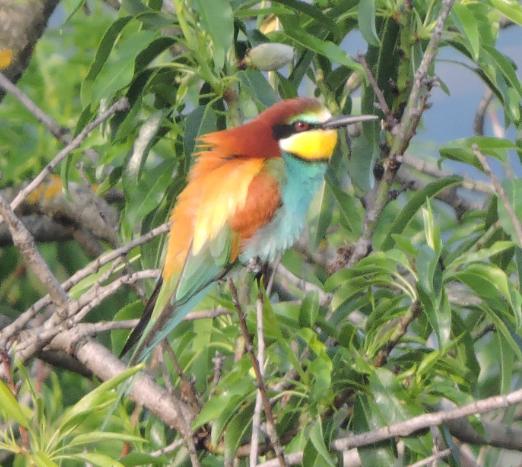
I suspect they were just passing through though, as they only stayed long enough to catch flies and then moved off to the north.
The Golden Oriole have also returned this week, again with a very distinctive song which announces their presence.
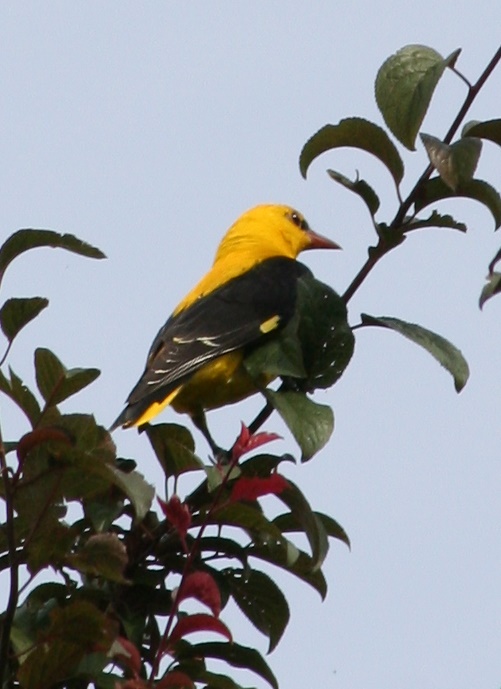
Often heard but seldom seen, these brilliant yellow birds are a feature of the island in summer.
The early spring flowers have finished and the roadsides and hedgerows are now coloured by the scarlet Poppy.
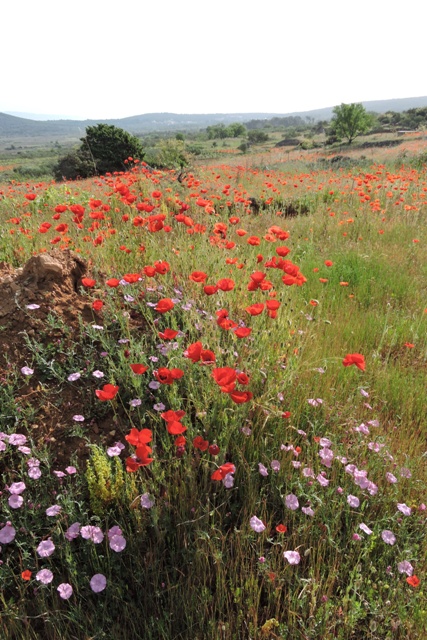
Elsewhere, there are the Tasselled Hyacinth, Muscuri comosum in flower, looking like miniature Menorah.

Driving back from the shops, I spotted this shrub in flower.
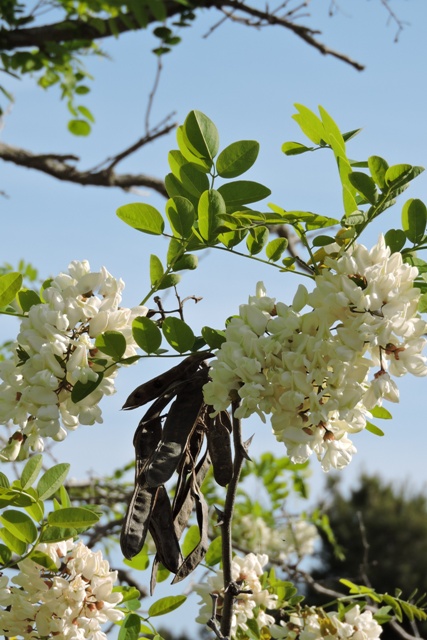
It is one I have not seen before. Judging from the leaves and seed pods, it is a member of the pea family and is a relative of the Scholar’s Tree, Sophora japonica.

However Sophora flower in Autumn, not in Spring. This is the only example I have seen on the island, but we have other members of the Pea family, like Cercis, or Cassia and Caesalpinia.
Although I have spent some time looking on line, I have yet to identify what the shrub is called, but I will look out for it in the future.
There are only a couple more Springwatch events for me to record for this year, one of which is perhaps the least welcome of the summer, the first appearance of the Tiger Mosquito.
This nasty invasive species which will soon be biting everything within sight. With the cool spring we have had, perhaps they will be late hatching.
I do hope so because the felines don’t like them and neither do I. NCG
Looking back – Week 11
This is the start of a new weekly section, with links to past issues of the blog.
2015/17 Icicle hitches and some disappointing news
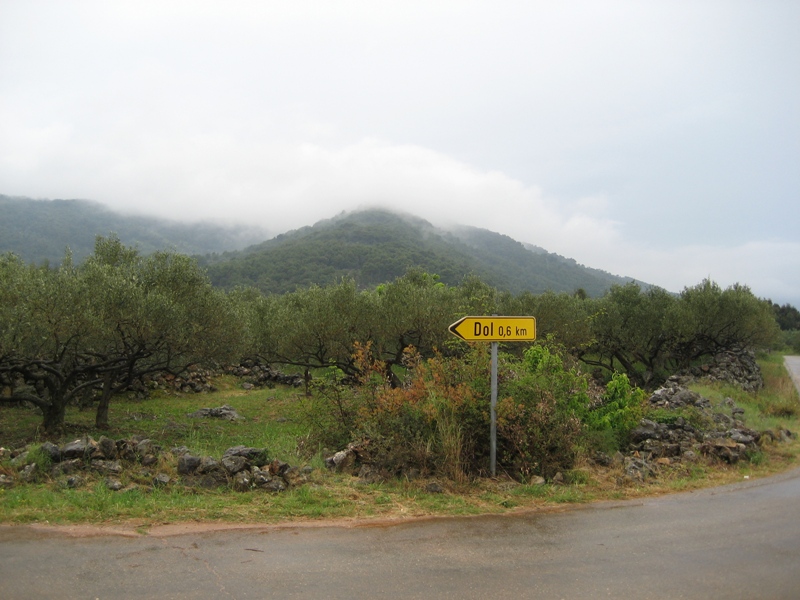
2016/17 Small can be beautiful too
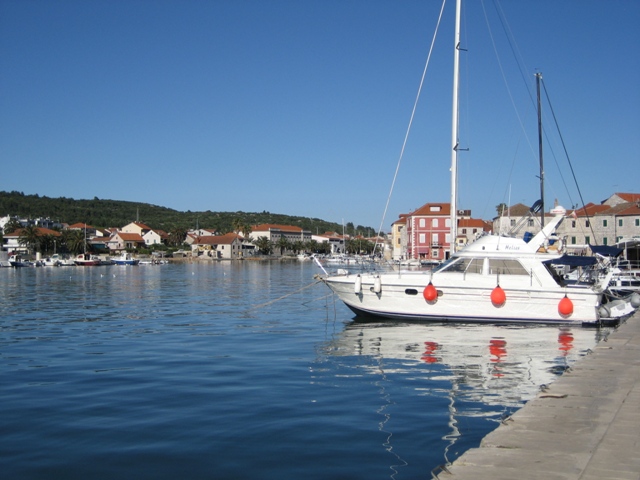
2017/17 A Tiger Moth in the garden
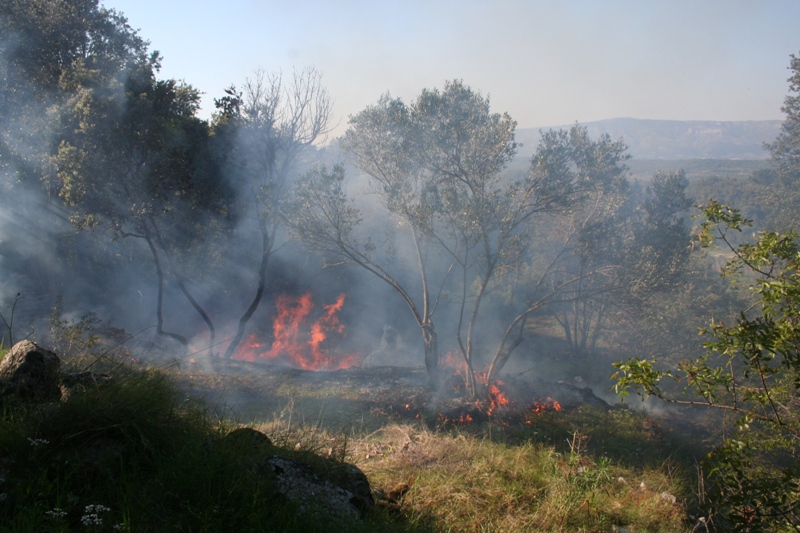
2018/17 Toad in the hole
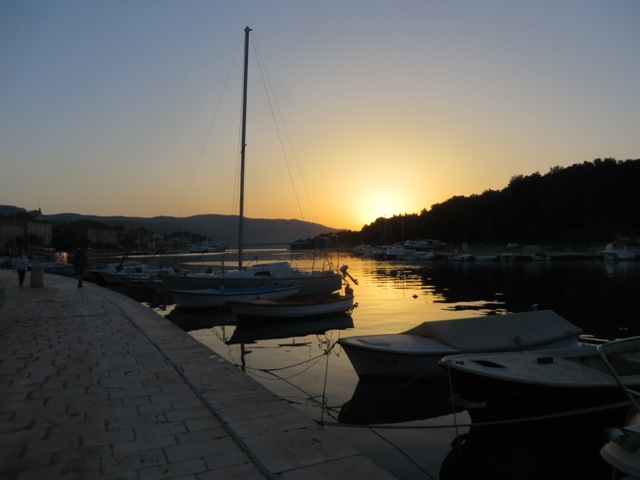
2019/17 Blood rain

2020/17 Flexibility is key

3 Responses
Elizabeth Blackledge
Hi Norman, could that tree be a Robinia? See https://en.m.wikipedia.org/wiki/Robinia_pseudoacacia
I had a Saphora to identify in the village a couple of years ago just never flowered but that year the long hot sunny summer triggered it into flower and it a was stunning sight. The bees were all over it. At first I thought it was Robinia but it was flowering in August, hence the revised decision.
Hope the vet comes up with a suggestion for the cats. Bathing the ears with cool water might help. I would make a flannel or similar very wet but not dripping, and wrap it round my hand and then stoke their heads and ears. Might get away with that approach. Good luck.
Schweitzer
Bonjour Norman,
En regardant les oreilles des chatons je pense qu’ils sont atteints par une mycose , sans doute microsporum canis . Je ne suis pas vétérinaire mais dermatologue et je vois souvent des teignes chez des personnes contaminées par leurs chatons .
Le vétérinaire pourra vérifier le diagnostic et donner un traitement adapté.
Bonne journée
Barbara Speakman
Hello Norman, Mike forwards your blogs to me and I love reading about your exploits.
Just thought I would pass on my experience with slugs and snails! Our first kitchen used to be attractive to the most enormous green slugs and it was suggested that sprinkling salt on them would see them off. What a horrendous sight of the poor thing I tried putting salt on, writhing and foaming till expired. So I usually found a shovel and transported them away. Nowadays they only appear in our garden and after many other experiments found that beer traps work best. At least they don’t suffer so much, I hope!